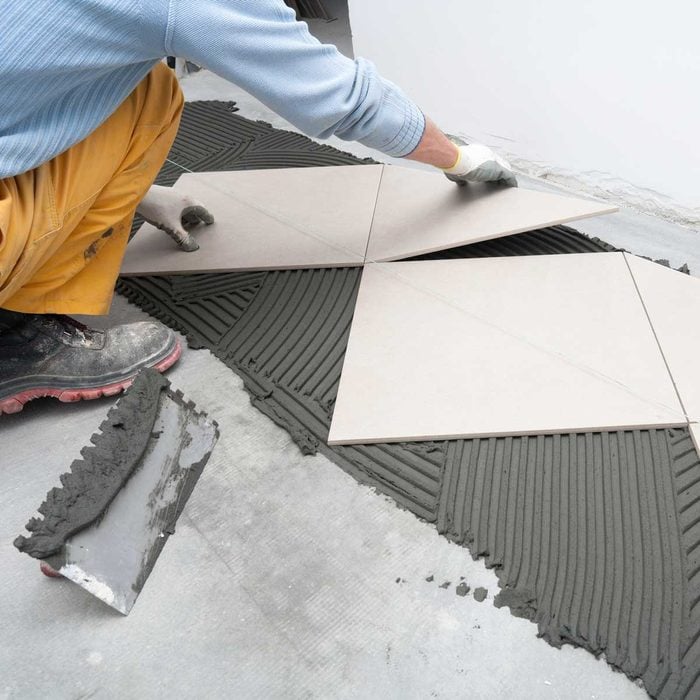How to Become a Certified Tile Flooring Installer

Becoming a tile setter can lead to a career with steady work, good wages and visible results clients appreciate.
Laying tile as a trade may be physically demanding, but it provides a satisfying career path. So says Laurent “Frenchy” Billaud, whose company operates in the greater Los Angeles area. Tile flooring installers are constantly in demand, and Billaud cites plentiful work and the opportunity to make good money as the biggest reasons for considering it as a career. Billaud should know; he’s done it for more than 20 years.
On This Page
Starting to Learn Tile Flooring Installation
Adding beauty and functionality to homes through tiled floors — plus walls, back splashes and showers — takes time to perfect. The best way to get a feel for the trade is to work as a tradesperson’s helper.
Helpers on the job site do a lot of lifting, carrying and mixing thinset (a variety of mortar used for adhering tile to surfaces). With experience and aptitude, they can advance beyond basic support duties. According to Billaud, helpers typically are paid minimum wage or slightly more, so most helpers are motivated to move into more formal career-path training.
Tile floor installers spend a lot of time bent over or on their knees. Shaping tile through cutting and grinding takes much of a tile setter’s time, says Billaud. “Physically, it is probably one of the most demanding trades,” he says.
Training to Become a Tile Floor Installer
Requirements to start a career in tile floor installation include a high school diploma or GED, transportation to jobsites, and the strength to carry boxes of tile and buckets of thinset. A desire to work hard and learn the nuances of the trade are vital.
“You want to remain professional as a business owner, so there’s only so much you can show a guy and then have them do it without making any mistakes,” says Billaud. “That’s where the big problem is, and it’s a shame there is no trade school for that.”
One can learn the trade and work with only on-the-job experience and no certification. However, those who choose this path remain limited in career advancement and independence. Billaud recommends participating in an apprenticeship program or the basic training courses provided by the Ceramic Tile Education Foundation.
Not all states require apprenticeship, though these programs offer a path to well-rounded, widely recognized training. A typical program lasts four years. Apprentices are paid a sliding percentage of the negotiated journey-worker wage, based on time in the program. They spend about 2,000 hours on the jobsite each year, and about 150 hours in classroom or online training.
Furthermore, because these apprenticeships are a partnership between contractors and the union, the costs are split between them. Consequently, apprentices pay only for some basic materials.
As a journey-worker, you become qualified to work without supervision. With a little experience, you can choose to become certified in installation or licensed to run your tile installation business.
What Do Tile Flooring Installers Earn?
According to the U.S. Bureau of Labor Statistics, the median wage for tile setters is about $43,000, which varies based on experience and the particular niche in the field. Finishers, who apply and clean up grout and apply sealants and caulk, tend to earn a little less.
Billaud says that he may pay a dependable tile setter $25/hour. A union worker in the New York/ New Jersey area currently earns about $60/hour. If you own an established company, earning potential is limited only by your goals and ability to attract work and manage your business.


